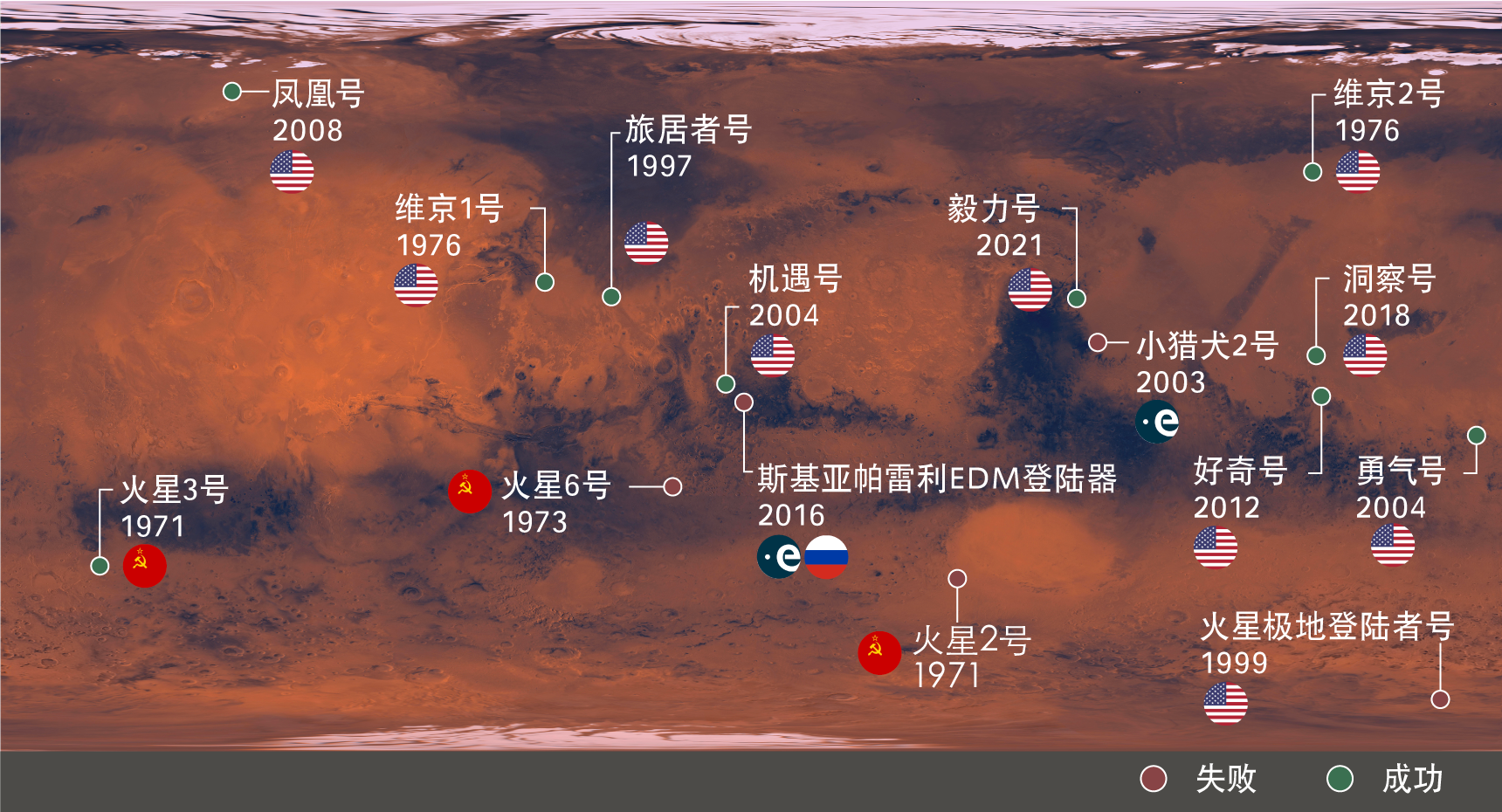

The Tianwen-1 Mars probe was launched into space aboard China's largest heavy-lift carrier rocket Long March-5 on July 23, 2020 from Wenchang Spacecraft Launch Site in Hainan Province, southern China.
On the way to Mars, the probe conducted four trajectory correction maneuvers and was successfully captured by Mars' gravity after cruising for seven months.
2020年7月23日,搭载“天问一号”火星探测器的长征五号重型运载火箭于海南文昌航天发射场升空,迈出了中国自主开展行星探测的第一步。
在经历长达七个月的飞行之后,“天问一号”完成了四次轨道修正、深空机动、载荷自检、近火制动等工作。


During the landing stage, there was a 20-minute signal transmission delay. Rather than relying on a command center on Earth, the probe performed all maneuvers on its own.
It reduced its speed from 4.8 km/s to 0 within 7 to 8 minutes, in what was among the most challenging parts of the mission.
在整个任务执行过程中,着陆巡视器登陆火星表面是最让人期待也是难度最高的环节之一。着陆巡视器要穿越火星稀薄的大气层,与火星的相对速度从每秒4.8公里降至零。
尽管这个过程只有七八分钟,但因为电磁屏蔽的原因,整个过程全部都要靠探测器自主控制完成,因此也被称为“恐怖7分钟”。


China has chosen a relatively flat region in the southern part of Utopia Planitia, a large plain, as a potential landing zone. It is believed to be a comparatively safe place for a landing attempt but also of great scientific interest.
Before the Tianwen-1 mission, humans had put more than a dozen spacecraft on Mars' soil.
本着降低风险、提高科学探测价值的原则,“天问一号”火星探测任务的首选着陆点定在火星最大的平原——乌托邦平原南部。
此前,火星上已留下了十多个人类探测器的痕迹。
Landings on Mars
人类火星着陆史


The Soviet Union made its first two attempts in 1971 – Mars 2 crash-landed on the planet and Mars 3 ceased transmissions 20 seconds after landing.
In 1976, NASA's Viking 1 conducted the first successful landing, with photos sent back to Earth. The U.S. agency’s Sojourner (landed 1997) became the first rover to operate on another planet.
For the past decades, Mars has been one of the most sought-after destinations in humans' space adventures. But about half of the attempts have failed. As a result, Mars has been dubbed a "graveyard" for spacecraft.
1971年,前苏联向火星发射了“火星2号”和“火星3号”任务——前者在火星表面坠毁,后者在登陆火星20秒后,就跟地球失去了联系。
1976年,美国“维京1号”着陆器在火星表面软着陆,成为第一个向地球发回照片的火星探测器;1997年登陆火星的“旅居者号”更是成为了人类第一个成功着陆运行的火星车。
过去数十载,人类一共进行了四十多次火星探测活动,但约半数的尝试都以失败告终,深空探索的难度,可想而知。
Missions to Mars
人类火星探索史


Source: NASA
Note: For missions with multiple objectives (for example, completing a Mars landing and orbiting in one mission), outcomes of corresponding modules are illustrated separately.
数据来源: NASA
注释: 如果一次火星探测活动包含多项任务(如一次发射计划同时完成环绕和飞越),则每个任务都在上图中单独标出。
In one of the most ambitious space explorations ever, China's Tianwen-1 is designed to complete orbiting, landing and roving in one go. With the historic landing, China has become the first nation to successfully land a spacecraft on Mars on its maiden attempt.
While conducting its first big interplanetary mission, China has made even bolder plans for the future, including a Mars sample return mission and a visit to Jupiter in the 2030s.
作为中国首次火星探测任务,“天问一号”计划一次性完成环绕火星飞行、在火星表面着陆以及在火星上进行巡视三步走的探测方案,这一壮举在全球尚属首次。
探测器的成功着陆让中国成为世界上首次探索火星即完成软着陆任务的国家。
火星探测是中国行星探测的第一步,中国还将在2030年前后计划实施火星采样返回、小行星探测、木星系等探测方案,开展关键技术研究,推动实施深空探测工程。
China National Space Agency, NASA, Scientific objectives and payloads of Tianwen-1, China’s first Mars exploration mission
国家航天局、美国国家航空航天局、《中国首个火星探测任务“天文一号”的科学目标和有效载荷》
Managing Editor: Hu Yiwei.
Editors: Pan Zhaoyi, Hu Xuechen.
Copy Editor: John Goodrich.
Chief Editor: Qin Xiaohu.
Visual Designer: CGTN Digital Graphics Team.
Interactive Engineer: Zhu Sirui, Zhou Rui.
Mobile Version & Video-Editing: Hu Xuechen, Wang Zengzheng.
Animation: Pan Yongzhe.
Coordinator: Xu Jiye.
Multimedia Producer: Dang Zheng.
Producer: Si Nan.
Managing Director: Zhang Shilei.
责任编辑:胡祎玮
数据与文字编辑:潘昭佚,胡雪琛,John Goodrich
主编:秦小虎
交互设计:CGTN新媒体设计团队
交互研发:朱思睿,周芮
移动端与剪辑:胡雪琛,王曾峥
动画:潘永喆
项目协调:徐纪业
制片人:党正
总制作人:司楠
总监:张施磊
Copyright © 2021 CGTN. Beijing ICP prepared NO. 16065310-3